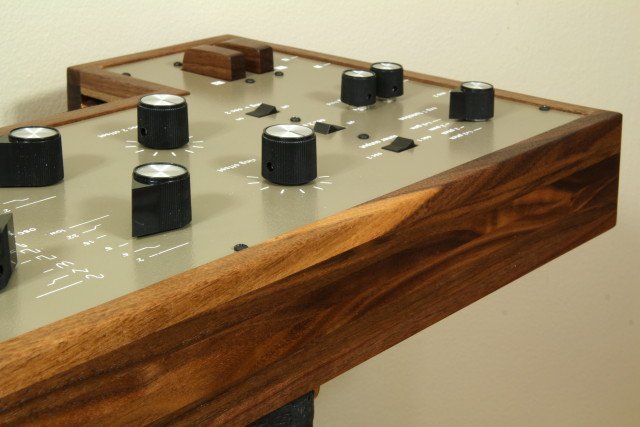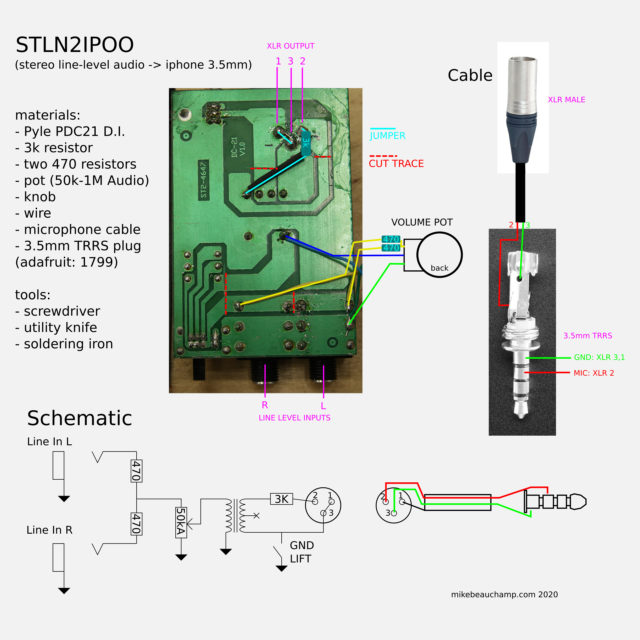New Northern Shop
January 8th, 2024 posted by mike under Workshop Updates.After finishing the most recent batch of ET-5 instruments, we packed up over 280 individual boxes and swept the floor of the old shop one last time and moved north. The last shop gave us room to grow the operation over the last 7 years, but the old building was impossible to keep warm during winter and the rusted-shut windows didn’t help during summer.
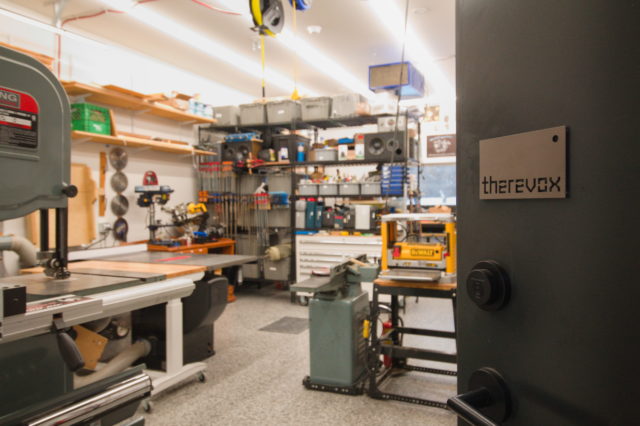
The new space is powered almost entirely by renewable energy (mostly hydroelectric) and heated by electric radiant floor heating. So far the space has been very cozy during the northern winter, and we’ll find out how the passively cooled design works during the summer – but at least the windows open.
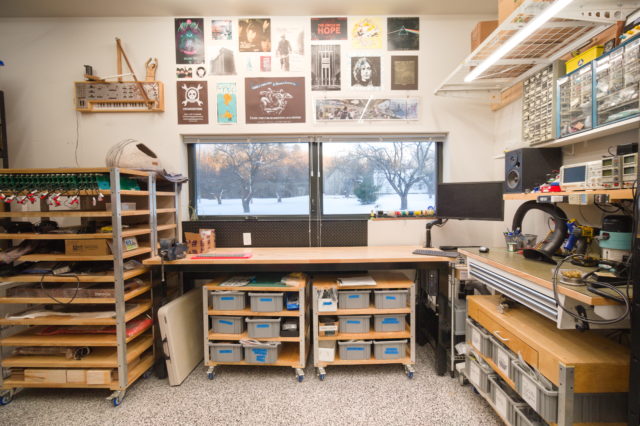
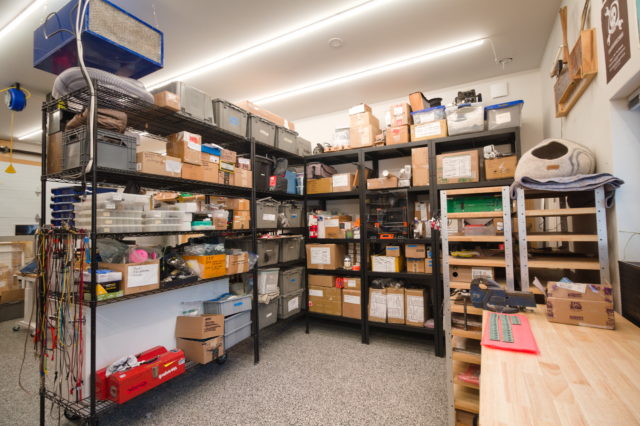
The electronics lab now has an adjustable-height workbench and a larger assembly table. We’ve also moved the 3d printer to a full enclosure and added more shelf space.
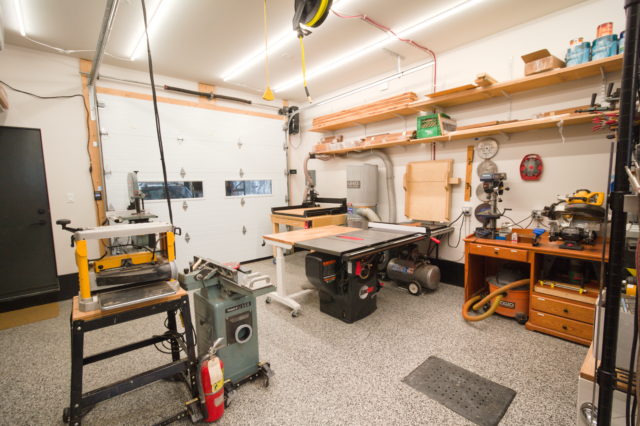
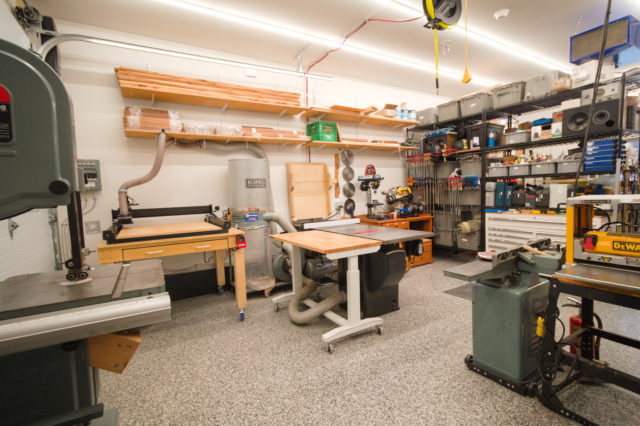
The woodworking area is nice and bright with high-cri flicker-free LED lighting and we should have enough space to work on bicycles after hours. I wanted to share these pictures before everything gets messy and dusty as we start on a new batch of ET-5 instruments!
Improving our Tweed Road Case
December 17th, 2021 posted by mike under Therevox News, Workshop Updates.To accommodate for the larger playing area in the ET-5, the outside dimensions had to change compared to the ET-4. This gave me the opportunity to rethink our Tweed Road Case and to ultimately design a better case for our synthesizers.
The Original Tweed Road Case
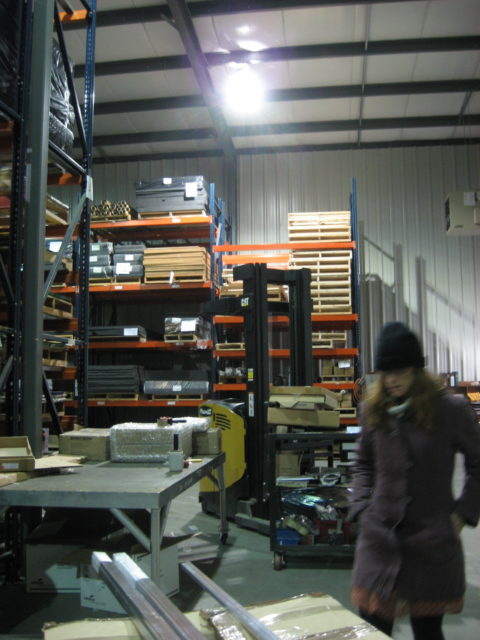
Melissa evaluating case hardware for the first case.
Designing our very first case and the ability to build it in-house was definitely an uphill battle. We wanted the perfect case. First we visited with a local flight case designer, whose heavy industrial cases are used by touring bands around the world. While the case certainly offered a lot of protection, they are extremely heavy with aggressive steel corners. We then met with case hardware manufacturers Penn-Elcom, whose headquarters is not to far from our shop. Their aluminum extrusion system looked ideal for the “every day case” that we had in mind. At the time, Melissa was doing a lot of textile work and we found ourselves in stores looking at various tweed fabrics. Once we figured out how to laminate that tweed onto the plywood sides of our new cases, the Therevox Tweed Road Case was born.
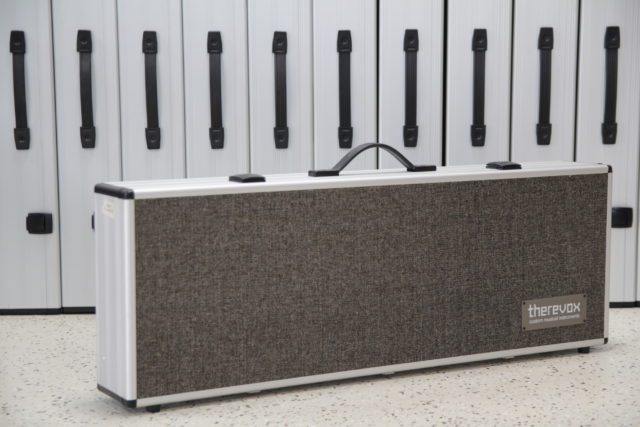
The final batch of Tweed Road Cases in the Therevox shop.
Approximately 50 cases were built from 2012-2018, with all of the inside foam cut with my Mom’s electric turkey knife. While I am proud of our first attempt at building a case, there were a few issues that I wanted to address now that I was given the opportunity of redesign. The case was heavy, despite using hollow aluminum. The aluminum extrusions often arrived scratched from Penn-Elcom, forcing us to return many pieces and wait for replacements. While the accessory area allowed for the power supply and expression pedal to be carried, this resulted in a heavy case that was not comfortable to carry for long periods of time. In fact, during a trip to Montreal I had to improvise and add wheels to the bottom of the case to easily move it down streets and through subway stations.
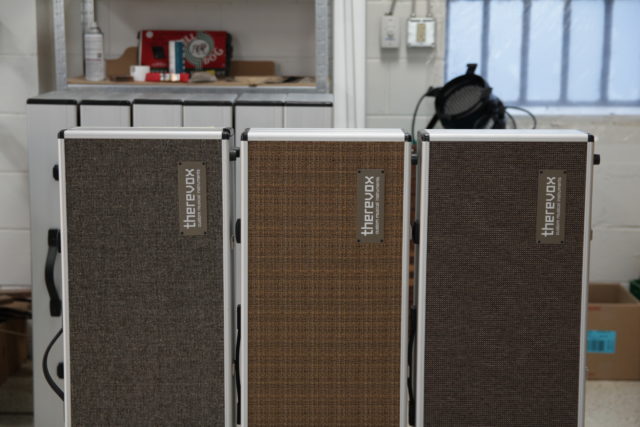
Our initial and subsequent tweed fabrics were discontinued, so the case was made in 3 variations from 2012-2018
The New Case Tweed Hard Case
For 25 years I have been carrying around my favourite guitar in a standard hard shell case and it has suited the job perfectly. I wanted the exact same style case but for the ET-5. We reached out to the Canadian manufacturer that made my guitar case and talked to them about building one for the ET-5. After we had our specs and drawings made up, we went to the task of finding a new tweed fabric that would match the new case styling. To make the case as small and light as possible, I decided to get rid of the accessory section of the case. It is still possible to fit the power supply and a few cables in the case on top of the ET-5 fingerboard, and the padded handle is a lot more comfortable than the old strap-stype handle.
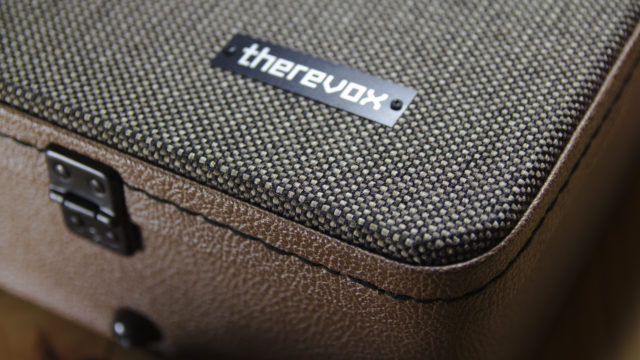
Anodized aluminum logo plate
We ordered hundreds of samples of fabric and tolex coverings and after going through them all, Melissa and I came to a very nice combination that I’m very happy with. The new case feels like a piece of vintage luggage and fits the ET-5 like a glove. While I am sad to see the old case go, this case is definitely an improvement.
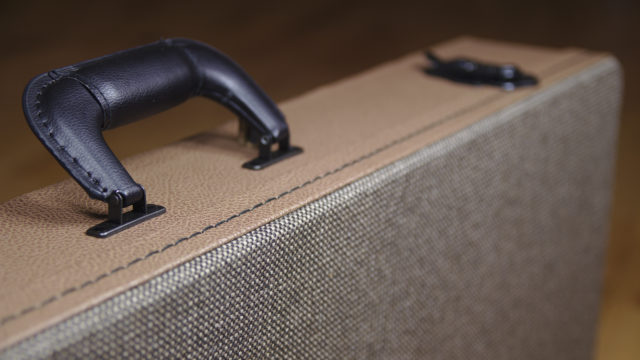
New padded handle and tweed fabric.
The new Tweed Hard Case is available now for $350 USD.
iPhone audio input using hacked D.I. Box
May 1st, 2020 posted by mike under Workshop Updates.If I designed the iphone, I would have included a line-in jack. If you’re a musician that is live streaming video right now and you’re lucky enough to own an iphone that has a headphone jack, here’s a pretty cheap ($20) and easy DIY project that I came up with to turn a DI box and a microphone cord into a device that will let you take stereo line-level audio and feed it directly into your iphone so your live video streams can sound as good as possible.
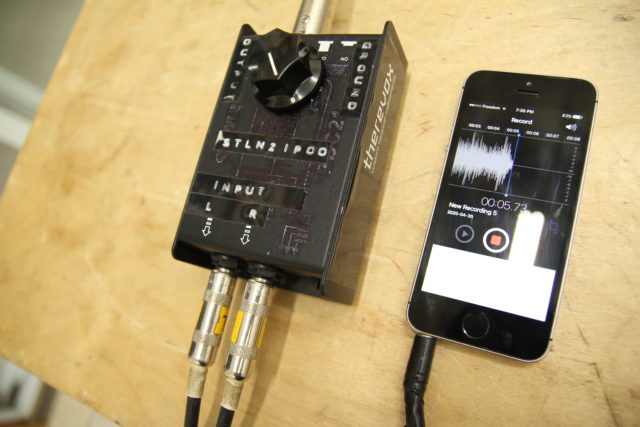
I built this device last year for Signal Exchange, our Windsor-Detroit synthesizer collective and have used it with my iPhone SE to live stream and capture video of performances. I would have named it something better than “STLN2IPOO” if I knew I would be sharing it publicly, but I’ve been asked a lot about this project and I know a lot of people are wanting to live stream right now – hopefully this will come in handy for some people.
Here is the full size instruction sheet
parts
- Pyle PDC21 DI box (bh photo, parts-express, primecables-lookalike?)
- Audio taper potentiometer between 50k and 1M, and knob
- Two resistors between 470 and 1k
- One 3k resistor.
- 3.5mm TRRS plug. (adafruit) and XLR microphone cable
- OR 3.5mm TRRS extension cable (bh photo, parts-express, primecables) and XLR male (bh photo, parts-express, primecables)
instructions
Open the PDC21, cut the traces shown and test to make sure they are cut with a multimeter if you can. Wire up the resistors and potentiometers, drill a hole in the chassis for the potentiometer. Reassemble and attach knob. For the cable, you can either attach the adafruit 3.5mm TRRS plug onto a regular microphone cable by cutting off the female end and wiring as shown, or you can cut the female end off of a TRRS extension cable and add the XLR Male connector.
how it works
This hack rewires the “input” and “output” 1/4″ jacks of the DI for our stereo inputs, the line-level signal gets summed into a mono signal through the two resistors before going into the potentiometer. The potentiometer acts as an attenuator, so you can turn down a loud signal to avoid clipping. The signal then goes into the DI’s transformer that converts it to microphone level and impedance. The 3k resistor lets the iphone know a microphone is plugged in and our special cable gets the microphone signal and ground to the right pins on the 3.5mm TRRS jack.
using it
Take line-level audio out from a mixer or musical instrument into your STLN2IPOO into one (mono) or two (stereo) 1/4″ inputs and run the mic cord into your iphone. Run the “voice memo” program and start recording to get a visual representation of the signal levels, if it is clipping turn the volume knob down. The DI box’s ground lift switch still functions if you find that you have a ground loop somehow between your gear and phone. That’s it! Now stream some video with good audio!
New Shop
February 5th, 2017 posted by mike under Therevox News, Workshop Updates.After quite a few months of renovating, we finally moved into the new shop. This building was once a welding shop and a pinball repair shop before it sat empty for several years. Here are some before and after photos.
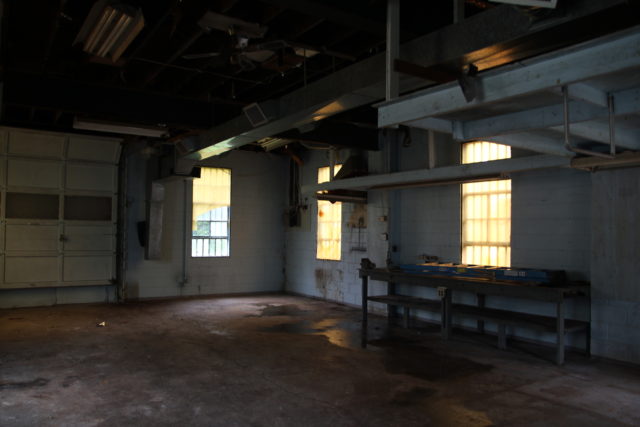
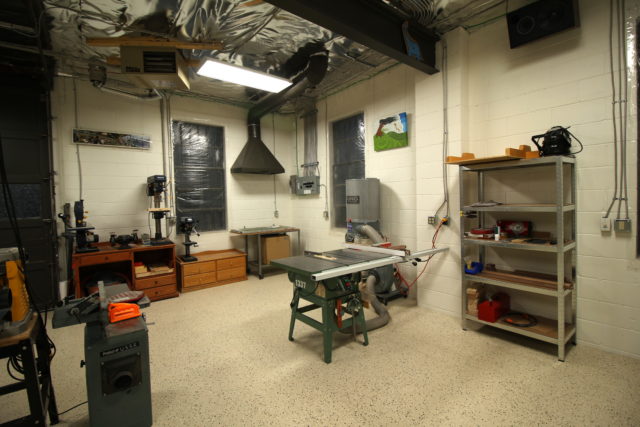
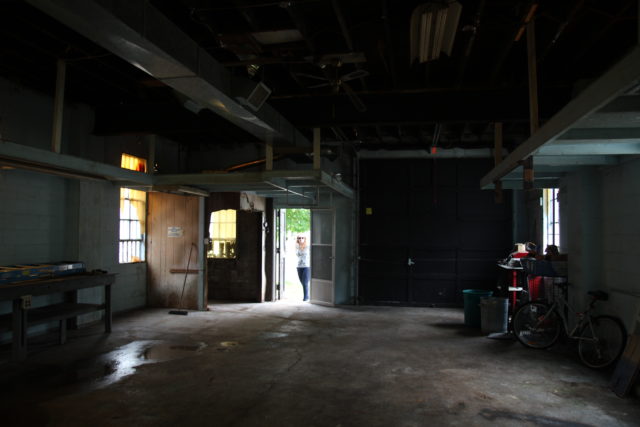
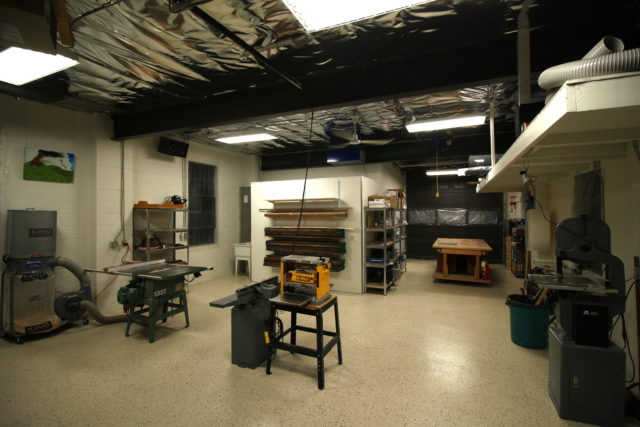
Making of the Reclaimed Wood Therevox
August 7th, 2016 posted by mike under Therevox News, Workshop Updates.I’ll admit that I’m a bit of a pack-rat, especially when it comes to nice pieces of wood. When I’m milling the rough Walnut to make a Therevox ET-4, I’m often left with an assortment of small pieces and I keep every single one of them. After four years of saving these pieces, I thought it was fitting to build a new Therevox ET-4 out of the wood left from construction of all the previous instruments.
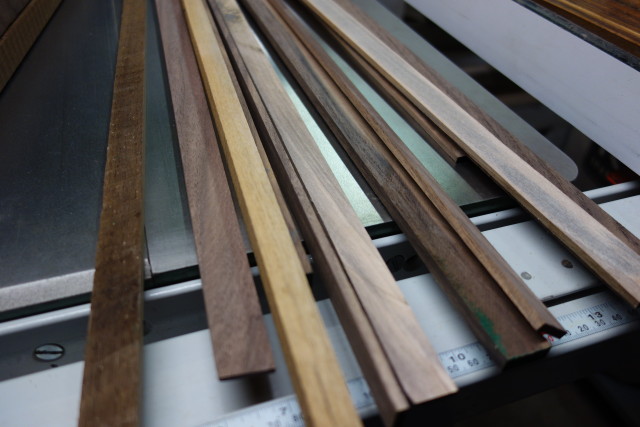
Hundreds of small strips were rounded up, measured, graded and then milled to proper dimensions. The order of the strips and grain direction were decided on and then the strips were laminated together.
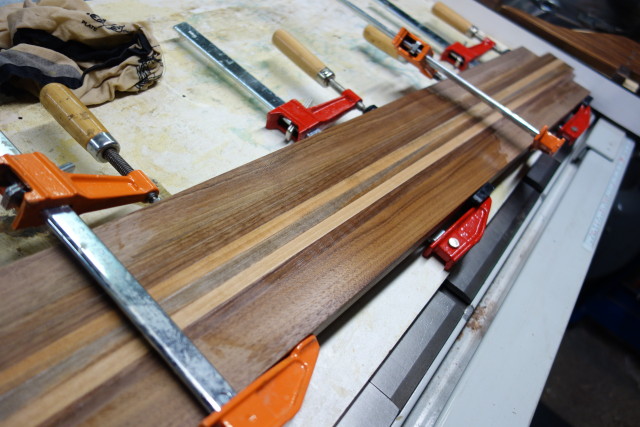
Each side of the instrument is made with a six-layer lamination. It wasn’t intentional, but I like the coincidence that this instrument is also the first of our sixth production run.
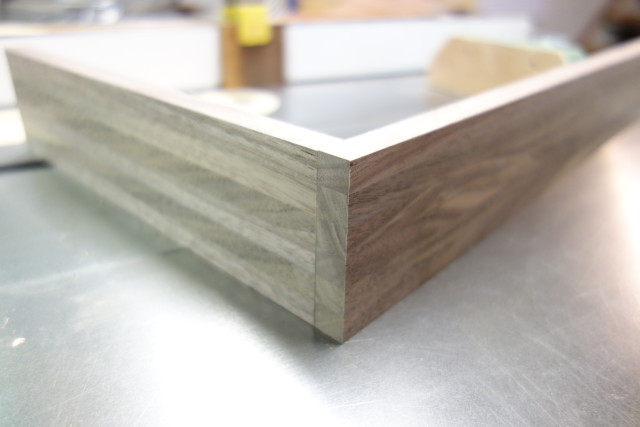
Wiping on the first coat of Tung Oil is always the most anticipated part of building these instruments, and I was especially pleased with how this special instrument turned out. I was honoured when the guys at reverb.com showed off the final product at MoogFest in Durham, North Carolina.
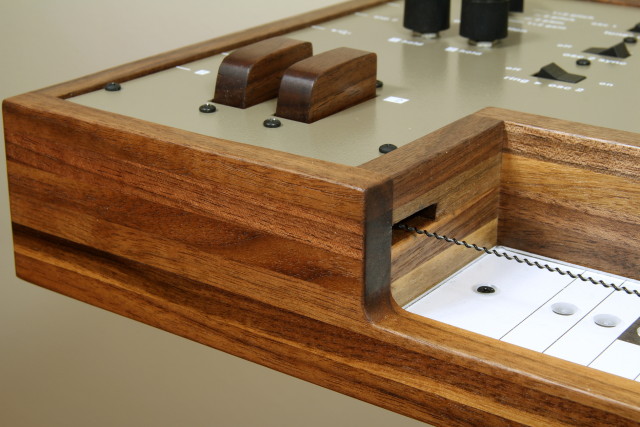
To be honest, this was an instrument I wanted to keep for myself but I already own one of the first ET-4’s (serial number 1 – 12). It was listed on reverb.com for only several hours before it found a good home at The Loft Recording Studio in Chicago.
